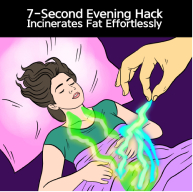In today’s hyper-connected world, achieving a healthy work-life balance has become both a personal mission and a societal challenge. The lines between professional duties and personal time are blurrier than ever, especially with the rise of remote work and digital tools that keep us “always on”. For many women — particularly those 35 and older — the struggle isn’t just about managing schedules; it’s about maintaining mental wellbeing, avoiding workplace burnout, and sustaining energy across life’s many roles.
This long-form guide dives deep into the evolution, strategies, and solutions for mastering work-life harmony. We’ll explore practical ways to thrive professionally while protecting your personal wellbeing, through flexible work arrangements, cultural shifts, and mindset changes backed by leading research and organizational insights.
Understanding Work-Life Balance and Its Evolution
The Historical Roots of Work-Life Balance
The term work-life balance emerged in the 1970s and 1980s as baby boomers began navigating the dual demands of work and family life. Back then, the goal was clear: separate work from life, and set boundaries that preserved mental health and personal priorities. This model worked in an era where office jobs ended at 5 PM, and technology didn’t follow us home.
However, this binary model started to crumble as technology advanced and cultural expectations shifted. Generation X began adopting remote work and using PTO strategically to gain flexibility, while millennials and Gen Z have embraced a more integrated, fluid approach.
From Balance to Integration: The New Reality
Today, the conversation has moved from balance to integration. Rather than isolating professional and personal roles, many individuals now blend them throughout the day — answering emails between school drop-offs, or taking midday walks for mental health. This shift has been accelerated by the COVID-19 pandemic and the rise of flexible work arrangements.
Why Work-Life Balance Still Matters
While “integration” is trendy, the principles of work-life balance remain deeply relevant, especially for women navigating complex caregiving roles, health needs, and career growth. Without mindful balance, the risk of workplace burnout and long-term stress becomes dangerously high.
Key Benefits of Work-Life Balance
- Improved mental and physical health
- Higher job satisfaction and engagement
- Reduced absenteeism and employee turnover
- Stronger relationships at home and work
- Greater clarity in personal and professional goals
Flexible Work Arrangements: A Game Changer
What Flexible Work Really Means
According to leading studies, flexible work arrangements encompass more than just remote work. They include:
- Compressed workweeks (e.g., 4 days x 10 hours)
- Remote or hybrid models
- Flexible hours (e.g., choosing your own start and end time)
- Job sharing
These arrangements allow women to manage caregiving responsibilities, chronic health conditions, or personal interests without sacrificing career goals. Studies show that organizations offering such models see increased retention, productivity, and overall employee wellbeing.
Workplace Burnout: Understanding the Risk
What Is Burnout?
The World Health Organization classifies burnout as an occupational phenomenon resulting from chronic workplace stress. Symptoms include:
- Emotional exhaustion
- Detachment or cynicism about work
- Reduced professional efficacy

Why Women 35+ Are Especially Vulnerable
Women in mid-life are often juggling multiple roles — from raising children and supporting aging parents to leading professional teams. Without boundaries and flexibility, they’re more likely to suffer from long-term exhaustion, anxiety, and disengagement. This is where work-life strategies become critical to preserving health and purpose.
Remote Work: The Double-Edged Sword
Opportunities
- Eliminates commute stress
- Increases time for self-care, exercise, family
- Supports personal productivity rhythms
Challenges
- Blurs boundaries between home and office
- Can lead to overwork or isolation
- Often lacks structured support for wellbeing
The key is to establish rituals and boundaries within remote work. That includes setting work hours, creating a dedicated workspace, and enforcing digital “off” time.
What Employers Can Do
Best Practices for a Work-Life-Friendly Workplace
- Adopt formal flexible work policies
- Train managers on empathetic leadership
- Promote mental health resources and normalize usage
- Encourage time-off and discourage after-hours communication
What You Can Do: Work-Life Balance Tips for Women 35+
1. Conduct a Personal Energy Audit
Identify where your energy goes each day. Are your routines fueling or draining you? Consider using a planner or journaling tool to map your time and notice patterns.
2. Advocate for Flexibility at Work
If your current role doesn’t support remote work or flexible hours, have a data-informed conversation with your supervisor. Use research and your own productivity insights to make the case.
3. Build Boundaries into Your Calendar
- Block lunch breaks as meetings with yourself
- Set a shutdown ritual to end your workday
- Use auto-responders or apps to limit evening responses
4. Reclaim Joy and Purpose Outside of Work
Your identity is not just your job. Engage with hobbies, community, creative projects, or nature. These “life inputs” are essential to sustainable work output.
Real-Life Example: Emily’s Remote Work Transformation
Emily, a 42-year-old marketing director in Toronto, struggled with burnout during the pandemic. With three kids at home and a high-pressure role, she found herself working 12-hour days. After negotiating a compressed workweek and establishing Friday family time, Emily now reports higher productivity, better health, and a rekindled passion for her work.
Frequently Asked Questions (FAQ)
Balance emphasizes separating personal and professional life, while integration blends the two fluidly throughout the day.
It can — if supported by boundaries, employer flexibility, and a culture that respects personal time.
Build your case using data, align with your manager’s goals, and highlight how flexibility will improve your productivity and engagement.
Emotional exhaustion, detachment, irritability, trouble sleeping, and reduced performance are common indicators.
Conclusion
Achieving sustainable work-life harmony isn’t just a goal — it’s a necessity for long-term health, fulfillment, and professional performance. As women over 35 continue to shape the future of the workforce, embracing remote work, flexible work arrangements, and clear boundaries can unlock more energy, joy, and wellbeing. You deserve a life that honors both your career and your personal dreams — without sacrificing one for the other.
Want more strategies like these? Visit herkindle.life for expert insights and empowering resources curated for women like you.







